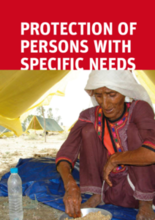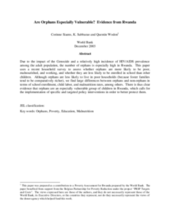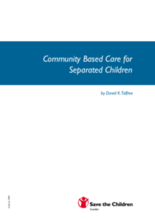Displaying 461 - 470 of 497
A guide for camp management agencies that provides instruction on the care and protection of all children (under 18), as well as those with specific needs, such as unaccompanied and separated children, child heads of households, children formerly associated with armed forces, and out-of-school and unemployed adolescents and youth.
This paper hopes to contribute to a sorely under-documented field of how to reintegrate institutionalized children back into the community in a post-conflict environment. It provides a brief description of IRC Rwanda’s Reunification and Reintegration Program for Unaccompanied Children, emphasizing its innovative nature and promising field methodologies. It includes a review of core principles and a programmatic overview of center and community-based work, outlining key steps in the process. It also provides a brief review of good practices and offer some points of reflection for future work with children in post-conflict situations.
This research paper explores the condition of orphaned children in Rwanda. The paper urges the design of appropriate social protection mechanisms, including differentiated policy responses, conditional cash transfers and increased access to education.
Examines the link between education and the protection needs of children, with a particular focus on the role of education in emergency response.
Training module outlining key principles concerning the protection of children affected by armed conflict and displacement. Topics include legal frameworks, identifying protection issues, threats to children in emergencies, and promoting healthy child development.
A study on the lives of separated refugee children in Dar es Salaam. The study highlights their experiences of abuse and discrimination, and their negative perception of refugee camps.
This short paper outlines the factors underlying children's voluntary decisions to join armed groups.
Follow-up analysis of reintegration for demobilized child soldiers in Rwanda. Concludes with lessons learned for successful reintegration.
A paper discussing the shortcomings of systems in which separated children are placed into residential/ institutional forms of care. It also considers community-based and some other forms of care as alternative approaches to preventing unnecessary separation of children from their families.
This paper outlines the International Save the Children Alliance’s position on residential care. It addresses the proliferation of residential care, its negative impact on children and the need for international attention. The paper presents the work of Save the Children and other agencies in order to highlight relevent issues and to provide a guide for those working with separated children.










